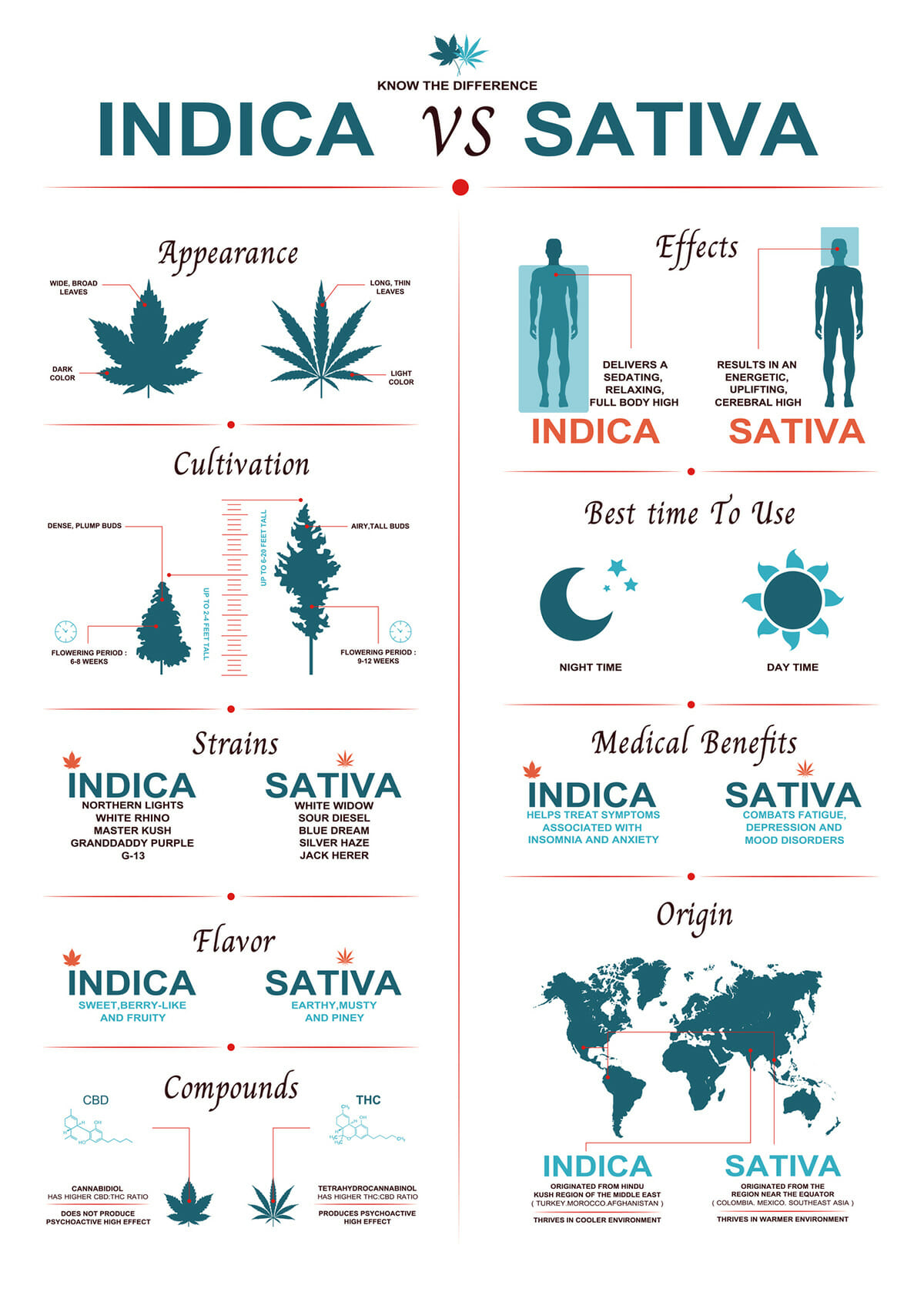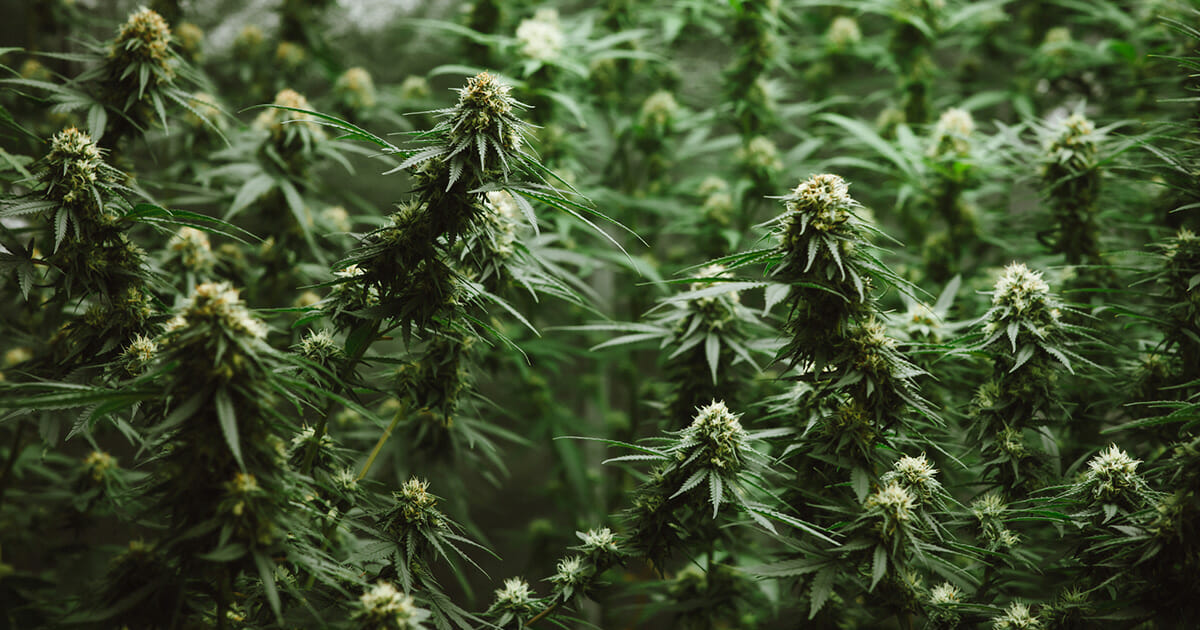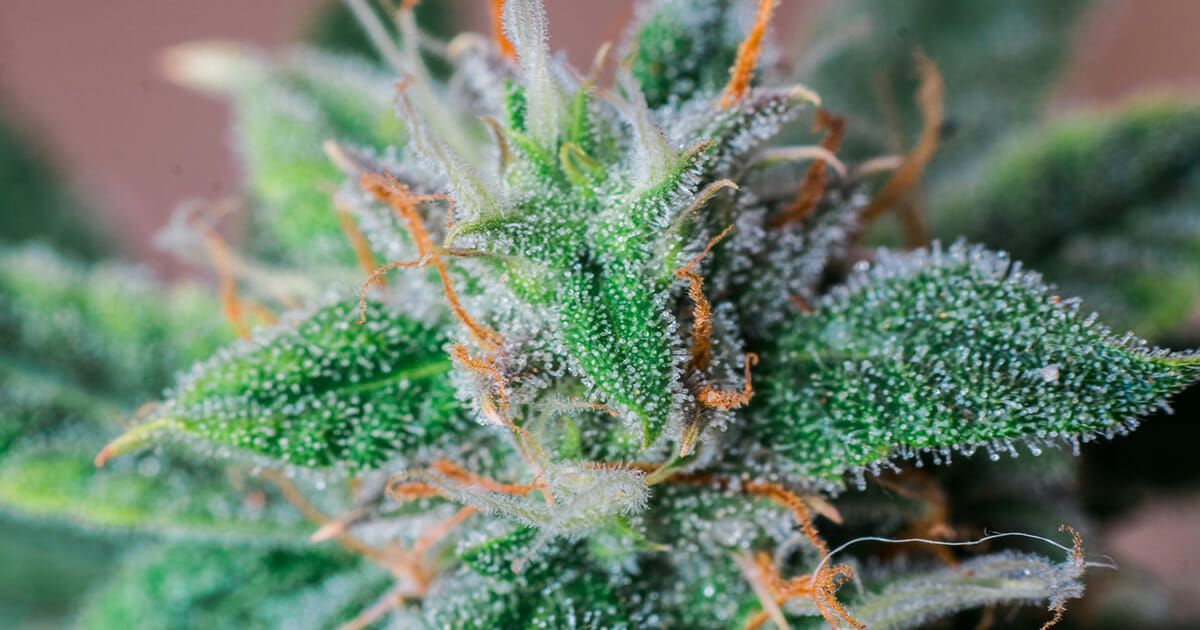7 Tips for Picking the Right Marijuana Strain for You
Written by Chris Weatherall on Dec 14, 2020
For decades, the media has mistakenly depicted marijuana as a dangerous drug that induces changes in your mental state, causing unethical behavior and criminal tendencies. As more states pass legislation legalizing marijuana for medical and recreational use, it has become increasingly evident that these damaging stereotypes are not true.
Users have challenged such misconceptions for years, but now scientific research studies provide evidence-based support for their assertions that marijuana helps them rather than harms them. Most marijuana users choose this particular substance because it noticeably improves their physical, mental, and emotional well-being, without the detrimental side effects of pharmaceuticals.
If you are interested in trying this natural medicine for yourself, the sheer amount and variety of marijuana products can be overwhelming. Thankfully, Kind Meds is here to help you! We have compiled this list of seven useful tips you should consider to help you pick the right marijuana strain for you before making a trip to our Mesa, Arizona Medical Cannabis dispensary.
1. Know the 3 Main Types of Marijuana Strains: Sativa, Indica, and Hybrid
Within the marijuana plant, two main chemicals work together to generate the full effects. Tetrahydrocannabinol, or THC, produces the psychoactive, mind-altering effect you associate with being “high,” along with alleviating nausea, stimulating appetite, and relieving pain. Cannabidiol, or CBD, provides therapeutic relief without causing this feeling, including reducing inflammation, decreasing anxiety, and relieving pain.
Marijuana is available in several strains that contain different proportions of CBD and THC, allowing them to produce different results. These strains can be classified into three broad categories—sativa, indica, and hybrid.

What Is a Strain of Weed?
 After observing the diverse physical and chemical differences between marijuana plants grown in different geographical regions, growers originally classified them as either Cannabis sativa or Cannabis indica. Due to their specific chemical makeup and growing conditions, each strain possesses its own unique benefits for treating various medical conditions. Today, most strains are hybrids, a third category in which Cannabis sativa and Cannabis indica are crossed. This allows them to combine the benefits of both strains into one plant.
After observing the diverse physical and chemical differences between marijuana plants grown in different geographical regions, growers originally classified them as either Cannabis sativa or Cannabis indica. Due to their specific chemical makeup and growing conditions, each strain possesses its own unique benefits for treating various medical conditions. Today, most strains are hybrids, a third category in which Cannabis sativa and Cannabis indica are crossed. This allows them to combine the benefits of both strains into one plant.
If you’re curious about how to pick the best weed strain, deciding between sativa- or indica-dominant types is the best place to start. Understanding the differences between the strains makes it easier for you and our team at Kind Meds determine the best marijuana strain for you.
Sativa Strains and How They Can Help You
 Cannabis sativa plants are thin and tall, sometimes reaching over 12 feet, with narrow, pointed leaves. They are naturally found in warm, dry climates with long days, such as Central America, Southeast Asia, and Africa. Their flowering cycle is longer than that of indica plants.
Cannabis sativa plants are thin and tall, sometimes reaching over 12 feet, with narrow, pointed leaves. They are naturally found in warm, dry climates with long days, such as Central America, Southeast Asia, and Africa. Their flowering cycle is longer than that of indica plants.
Marijuana products derived from sativa strains generally include high amounts of THC and low amounts of CBD, resulting in invigorating, uplifting effects. Sativa strains are commonly consumed during the day because they increase energy levels, encourage socializing, boost your mood and productivity, enhance creativity, help you focus, and prompt feelings of happiness and euphoria.
Sativa strains can provide relief from mood swings, stress, nausea, fatigue, and physical pain. They provide the most beneficial effects for individuals with ADHD, mood disorders such as depression or bipolar disorder, HIV/AIDS, Alzheimer’s disease, and glaucoma.
Indica Strains and How They Can Help You
Cannabis indica plants are short, stocky, and hardy with a dense arrangement of wide, broad leaves. They flourish in harsh, dry climates and are native to India, Pakistan, Afghanistan, and Turkey. Their flowering cycle is shorter than that of sativa plants, and they produce higher numbers of buds.
Marijuana products derived from indica strains typically contain low amounts of THC and high amounts of CBD, providing you with calming, sedating effects. Indica strains are usually consumed during the evening because they alleviate stress, relax muscles, enhance feelings of sleepiness, reduce insomnia, and increase appetite, along with boosting your mood.
Indica strains can relieve anxiety, nausea, headaches, muscle spasms, seizures, and physical pain. Their effects are particularly beneficial for individuals with arthritis, inflammation, PMS, sleep apnea, lupus, fibromyalgia, multiple sclerosis, cancer, Crohn’s disease, Parkinson’s disease, epilepsy, and anxiety disorders, including generalized anxiety disorder, panic disorder, post-traumatic stress disorder (PTSD), and obsessive-compulsive disorder (OCD).

Hybrid Strains and How They Can Help You
 Hybrid plants are produced by crossbreeding Cannabis sativa and Cannabis indica plants. Marijuana products derived from hybrid strains contain properties from both sativa and indica strains, so their effects tend to fall in the middle of the spectrum between these two. Hybridization allows for the creation of unique properties to provide more effective, personalized treatment.
Hybrid plants are produced by crossbreeding Cannabis sativa and Cannabis indica plants. Marijuana products derived from hybrid strains contain properties from both sativa and indica strains, so their effects tend to fall in the middle of the spectrum between these two. Hybridization allows for the creation of unique properties to provide more effective, personalized treatment.
2. Research Specific Strains
After learning about the types of marijuana strains, your next step in picking the right marijuana strain for you is to research specific strains to understand their specific composition. This will allow you to determine which ones will provide you with the effects you desire based on your specific health concerns. Described below are some of the top marijuana strains.
Top Marijuana Strains: Sativa and Sativa-Dominant Hybrids
Moose and Lobsta’ is a 70/30 sativa-dominant hybrid with a 21% THC content. This strain has a skunky aroma with hints of tropical fruit and is recommended for depression, neurological pain, creativity, and fatigue. A 60/40 sativa-dominant hybrid with a 20% THC content, Bruce Banner is popular for outdoor activities. Helpful for muscle spasms, it is mentally uplifting and motivating while relaxing your body. Jilly Bean is a 60/40 sativa-dominant hybrid with a 16% THC content, noted for its aphrodisiac properties, particularly among women.
Some of our favorite sativa strains at Kind Meds:
- Agent Orange
- Candyland
- Durban Poison
- Green Crack
- Headbanger
- Island Sweet Skunk
- Lemon Skunk
- J1
- Jack Herer
- Maui Wowie
- Pineapple OG
- Sour Diesel
- Super Lemon Haze
- Tangie
Top Marijuana Strains: Indica and Indica-Dominant Hybrids
Triangle Kush or “The White” is an 85/15 indica-dominant hybrid with a 20% THC content. Distinctly lacking in aroma compared to other strains, it produces euphoria and encourages creativity. A 60/40 indica-dominant hybrid with an 18% THC content, Larry OG is ideal for beginners. It has a piney, burnt orange aroma and is recommended for stress relief and depression. Dr. Who is a 60/40 indica-dominant hybrid with a 19% THC content. It alleviates headaches, nausea, stress, depression, and minor pain and features a woody, earthy flavor.
Some of our favorite indica strains at Kind Meds:
- Blueberry Kush
- Bubba Kush
- God’s Gift
- Grandaddy Purple
- Kosher Kush
- Mendo Breath
- Northern Lights
- Platinum Purple Kush
- Presidential OG
- Purple Kush
- Skywalker
- Soul Assassin OG
Top Marijuana Strains: Hybrids
White Romulan is a 50/50 hybrid with a 20% THC content. This well-balanced strain is perfect for beginners, producing uplifting mental effects and relaxing body effects. Another 50/50 hybrid with a 20% THC content, THC Bomb was developed for intense psychoactive effects but is mellowed out with a high CBD content.
Some of our favorite hybrid strains at Kind Meds:
- Blue Dream
- Cherry Pie
- Girl Scout Cookie
- GG4
- Headband
- LSD
- OG Kush
- Pineapple Express
- Platinum Girl Scout Cookie
- Tangerine Dream
- Trainwreck
- White Widow
3. Know Your Tolerance

While other intoxicating substances may cause serious, often irreversible damage to the nervous system, marijuana’s influence on the brain is extremely mild, a harmless short-term phenomenon known as “tolerance.” Individuals experience increased tolerance to marijuana through repeated consumption, which leads to a diminished effect over time. If you stop using marijuana, the brain recovers at an impressively quick rate, typically within days or weeks.
Your history and level of experience with marijuana affect your tolerance or the amount of the substance you will need to consume to experience the desired effects. Tolerance is crucial to consider when trying to determine how to pick the best weed strain. But how does it work?
Tolerance can be explained by taking a look into the body’s endocannabinoid system. THC molecules activate the CB1 receptors within your body, leading to its psychoactive effects. After THC leaves the body, this activity returns to normal levels. Repeated exposure to THC prompts your brain to minimize the CB1 receptors’ increased activity. It alters the receptors, first by desensitizing them or reducing their ability to activate, then through internalization, which removes the receptors from the cell’s surface. THC’s effects are then dampened over time, meaning you must consume more to regain your initial level of intoxication.
The tolerance of a first-time user depends primarily on sex, body mass index, and product potency. Regular users of marijuana consuming daily or weekly will experience its effects differently than non-regular users consuming less often. Cannabis tolerance studies have demonstrated this difference, concluding that non-regular users have longer, more pronounced periods of intoxication than regular users. Tolerance influences the strength of the substance’s physiological and cognitive effects, such as attention, learning, memory, cortisol release, EEG signals, psychomotor activity, anxiety, and resting heart rate.
Studies of tolerance to marijuana have been limited. Still, they conclude that sustained consumption at a set dosage over a long time does result in the development of tolerance to some of its effects. They also agree that taking a relatively short break from marijuana use decreases tolerance and allows the user to reach previous intoxication levels successfully.
A consumer who only uses marijuana infrequently will need a different strain or dose than someone who has been smoking daily for the past decade. CBD-dominant strains work best for beginners, while experienced users may favor THC-dominant strains. The less experience you have, the lower the THC content you should be seeking, and the less you should be consuming at a time.
4. Consider the Following Factors of Each Strain
When picking the right marijuana strain for you, various factors come into play, including:
- Flavor and aroma—In addition to THC and CBD, marijuana products contain molecules called terpenes that produce flavors and aromas, working with cannabinoids to induce therapeutic effects. There are over 200 terpenes in marijuana, with properties ranging from floral or fruity to earthy or musky. Different strains feature varying levels and concentrations, so you can decide how subtle or intense a flavor you prefer.
- Desired effects—Examine strains based on expected effects from their cannabinoid and terpene profile. Our expert budtenders would be happy to discuss your specific needs and provide recommendations for you.
- Potential medical benefits—If you plan to use marijuana to treat a medical condition, certain strains have proven the most beneficial for particular conditions. For example, customers report that Dr. Who works well in relieving symptoms of ADHD, while Triangle Kush helps those suffering from PTSD.
- Potency—Some strains have a higher potency than others, so your desired level of potency can help you choose which strains you would like to try. Choose a more potent THC concentration for a more intense high or a higher CBD content to relax.

5. Choose a Reputable Dispensary
The single most important factor when deciding how to pick the best weed strain for you is to choose a reputable dispensary with high-quality, lab-tested products. Any marijuana products you purchase from a legal dispensary must adhere to a certain set of quality and safety standards. Rigorous lab testing analyzes the content and potency of cannabinoids and terpenes found in every strain. It verifies the absence of harmful substances that can cause health issues, including mycotoxins, pesticides, fungicides, heavy metals, and residual solvents.
Choosing a reputable dispensary not only provides information on strains that help you pick the right one for you, but it also ensures that the marijuana products you will consume are safe.
6. Micro-Dose for the Most Control Over Your Experience
When consuming marijuana products, it is essential to start with an amount that is enough to produce effects at the lowest intensity level. This technique is referred to as micro-dosing. The goal is to carefully test how an unfamiliar strain makes you feel, and then you may gradually increase the dosage as needed over time. Taking two hits instead of smoking an entire joint, or breaking an edible into smaller pieces, gives you the maximum control over your high. Micro-dosing increases the likelihood of success and reduces the risk that you will have a negative experience.
7. Keep a Record of the Strains You Try

Now that you have been given a chance to experiment with different strains of marijuana, make a detailed record of what you have tried and how it affected you. Marijuana growers have maintained bud journals for years to track plants’ health and development over time, allowing them to enhance potency and yield amounts over time. Tracking your use as a consumer has various benefits, as well.
Every person is different, so a certain amount of experimentation is necessary to discover the best strains, doses, and delivery methods for your unique situation. Keeping a detailed bud journal allows you to keep a revolving inventory of the strains you try and important characteristics of each product, such as brand, dispensary, potency, and terpenes. Along with the plant descriptions, you will explain your experience consuming each particular strain, including changes in your mood and side effects.
Maintaining and updating an organized list of the strains you’ve tried improves your ability to choose the right strains in the future and avoid products that produce unwanted side effects. This is especially vital for users who consume marijuana to alleviate symptoms of various health conditions. You may discover that a strain manages your symptoms well, but only when consumed in a specific dose or through a particular delivery method, such as a topical or an edible. A bud journal can serve as a very effective way to personalize your treatment and gather suggestions for your unique needs.
By keeping an inventory of your experiences, a bud journal provides a practical way to ensure you remember which products work for you and which do not. This makes it easier to communicate your preferences with dispensary staff and saves you money by preventing you from purchasing products that don’t provide the desired side effects or effectively relieve your symptoms.
You can manage this journal in several ways, from filling in a blank notebook to creating a detailed spreadsheet on your computer. Several companies have recently marketed journals designed for the sole purpose of documenting your experiences, including helpful information and featuring tastefully discreet covers. There are also applications developed for this purpose, guiding you through the process of trying strains, keeping track of your symptom reliefs, and recommending new strains for you.
Visit Kind Meds to Get Started with Medical Marijuana in Arizona

Kind Meds is Arizona’s premium medical marijuana dispensary, with an extensive selection of strains in high-quality flower, concentrates, edibles, and topicals. Every person is different and has unique needs, but now that you have learned more about the strains and how to evaluate them, you can explore our options and make well-informed decisions. Stop by today to speak with our experienced professionals and find the perfect strain for you.







